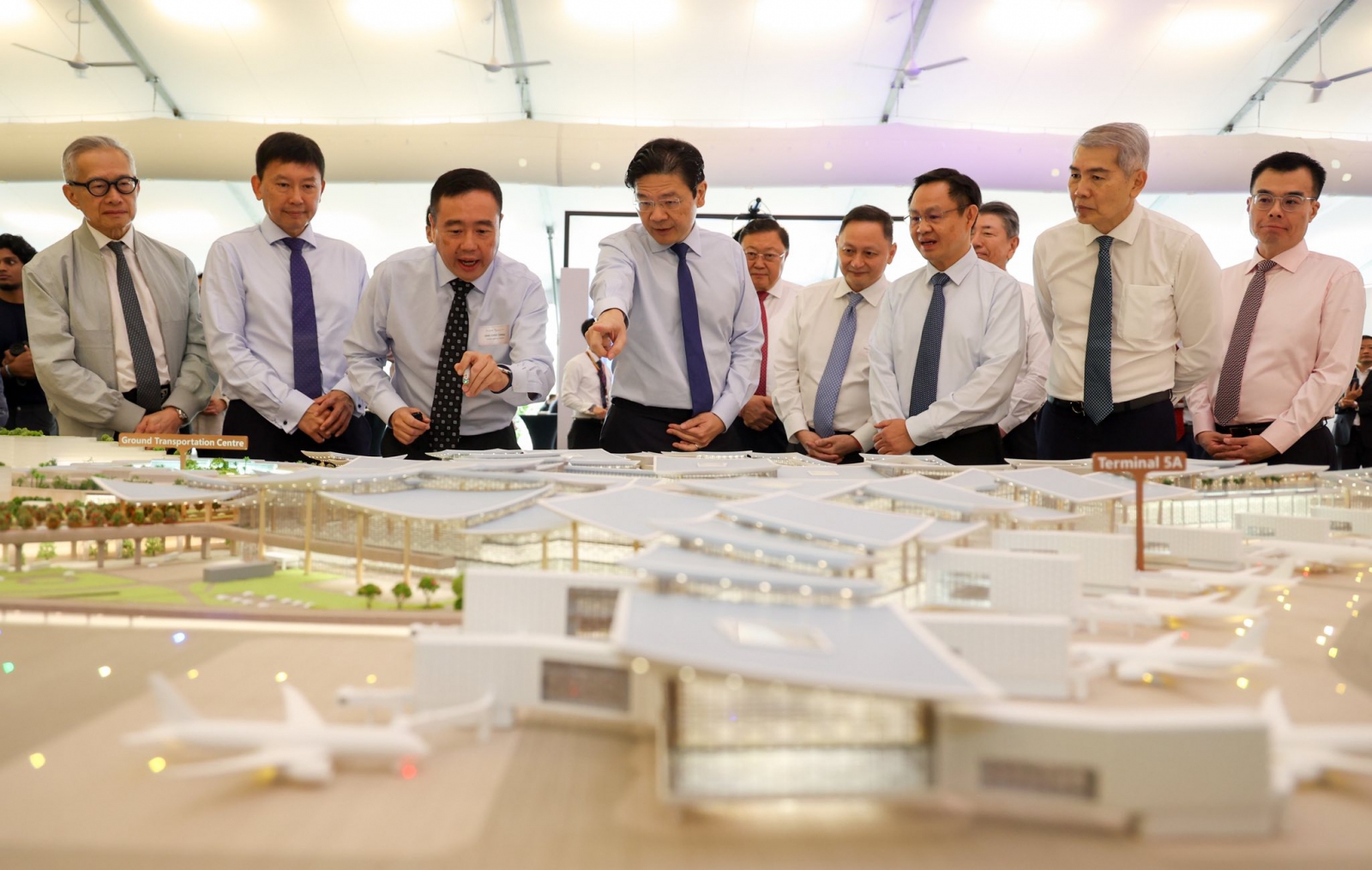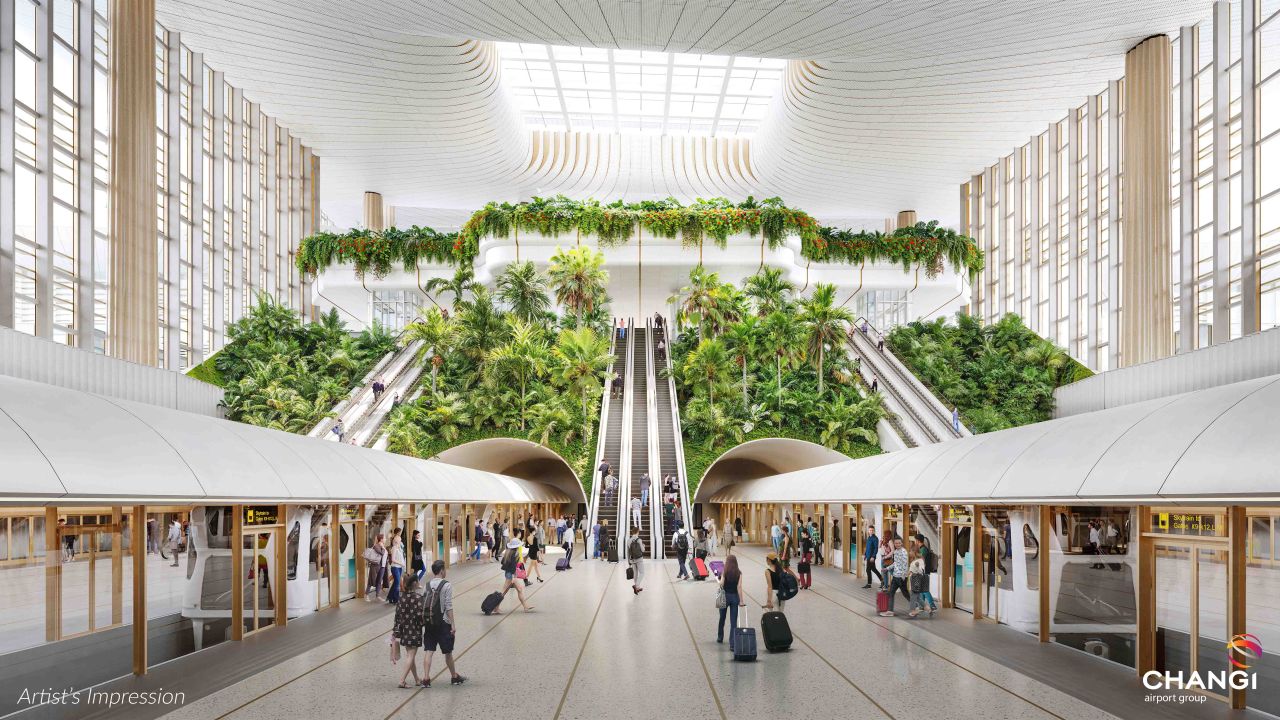
Singapore Prime Minister Lawrence Wong attends the groundbreaking ceremony for Changi Airport Terminal 5.(Photo: Lawrence Wong's Facebook)
Singapore’s Changi Airport will invest tens of billions of Singapore dollars in building a fifth terminal, which will incorporate advanced systems to improve operational efficiency and passenger experience.
The terminal will also enhance carbon reduction efforts and climate resilience, including infrastructure to support alternative aircraft fuels and systems designed to cope with heavy rainfall, such as upgraded drainage and runways.
AI and baggage robots to power terminal 5
Following a post-COVID surge in passenger traffic that broke new records, Changi Airport is resuming its Terminal 5 project after a two-year delay. The airport operator, Changi Airport Group, held a groundbreaking ceremony on the 14th, projecting that the completed terminal will increase total passenger capacity to 140 million annually — a 55% increase from current levels.
The new terminal will strengthen automation and integrate technologies such as image analysis and artificial intelligence to proactively track turnaround times for arriving and departing aircraft. These systems will help anticipate potential flight delays. Additionally, baggage-handling robots will be deployed to ensure smooth luggage operations during inclement weather, such as thunderstorms.
Changi Airport, consistently ranked among the world’s best, is also seen as a leader in sustainability within the aviation industry.

Changi Airport Terminal 5 is set to receive green building certification. (Image: Changi Airport Group)
Green building, energy efficiency at the core of terminal design
Terminal 5 will be certified as a Green Mark Platinum Super Low Energy Building, Singapore’s highest green building rating. It will house the country’s largest rooftop solar power system, capable of generating enough electricity to power 20,000 four-room HDB flats for a year. The terminal will also feature a low-carbon, high-efficiency Distributed District Cooling System to manage indoor temperatures.
Aligned with airlines’ decarbonization targets, the new terminal will be equipped with infrastructure to support Sustainable Aviation Fuel (SAF) and other alternative fuels.
From this year onward, all newly deployed light vehicles, forklifts, and tow tractors within the airport’s restricted areas will be electric. Once Terminal 5 is operational, its entire car fleet will be electric-powered.
The terminal design also incorporates post-pandemic flexibility, with spaces that can be quickly reconfigured for health screening, isolation of high-risk passengers, and the deployment of contactless technologies and advanced ventilation systems.
Designed for climate extremes and rising sea levels
To address risks from extreme weather events such as heavy rainfall, Changi East district, where Terminal 5 will be in, would sit 5.5 meters above sea level. Taxiways will be slightly sloped to aid drainage, and the drainage system has been engineered to remain effective even as sea levels rise.
Changi Airport Group has not disclosed the exact cost of Terminal 5, only noting that it is working with the government on viable financing models. The terminal is expected to open to the public in the mid-2030s
Source: The Straits Times, Changi Airport Group
.jpg)


